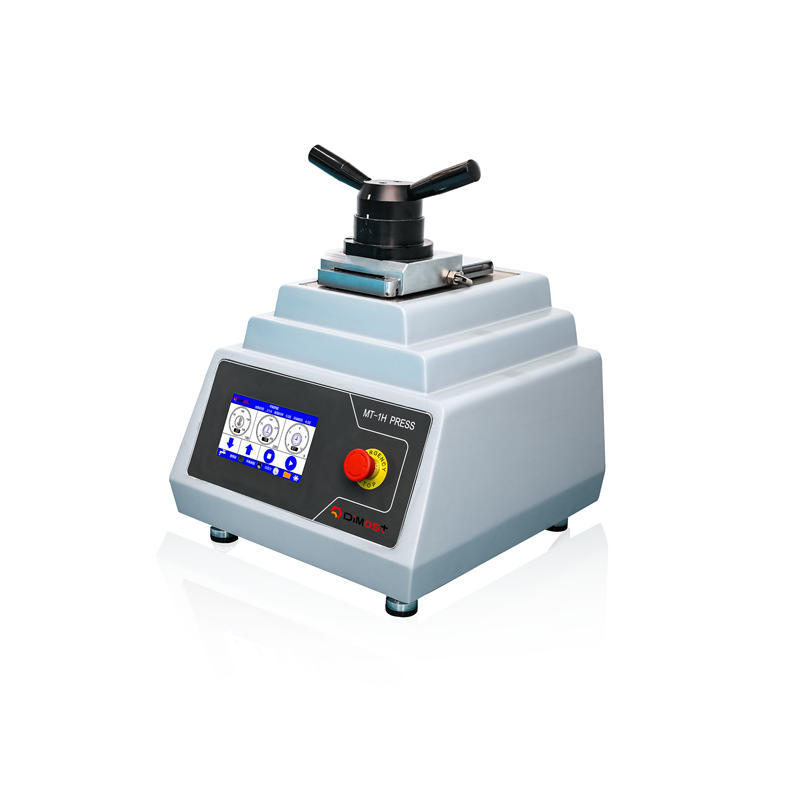A metallographic mounting press plays a crucial role in the preparation of samples for microscopic analysis in the field of material science. This device is an essential tool used to encapsulate, protect, and stabilize specimens, allowing for accurate and detailed examination under a microscope. In this comprehensive answer, we will delve into the various aspects of how a metallographic mounting press contributes to sample preparation and its significance in advancing our understanding of materials.
Introduction to Metallographic Sample Preparation:
Material science involves the study of the structure, properties, and behavior of materials at the atomic and molecular levels. Microscopic analysis is a fundamental technique used to investigate these materials' microstructures, which can provide insights into their composition, grain size, distribution of phases, defects, and other characteristics. However, before samples can be subjected to microscopic analysis, they need to undergo meticulous preparation to ensure accurate and reliable results. This is where a metallographic mounting press comes into play.
Sample Encapsulation and Embedding:
One of the primary functions of a metallographic mounting press is to encapsulate specimens in a suitable medium. This process, known as embedding, involves placing the sample in a mold and surrounding it with a resin or mounting material. The mounting material not only provides structural support but also helps to preserve the sample's integrity during subsequent preparation steps. The encapsulation process prevents deformation, cracking, or disintegration of the sample, ensuring that the original microstructure is maintained.
Thermal and Pressure-Based Processes:
A metallographic mounting press utilizes a combination of heat and pressure to achieve effective sample encapsulation. The process begins by placing the specimen within a mold, which is often a cylindrical or rectangular container. The mold is then filled with a liquid or powdered mounting material, such as epoxy resin. The mold is closed, and the assembly is placed into the press. The press applies controlled heat and pressure to the mold, causing the mounting material to solidify and firmly encapsulate the specimen. The application of heat reduces the viscosity of the mounting material, allowing it to flow and penetrate the sample's porous structure. Simultaneously, pressure ensures that the material uniformly surrounds the sample, minimizing voids or air bubbles.
Advantages of Metallographic Mounting Press:
The use of a metallographic mounting press offers several advantages in sample preparation for microscopic analysis:
Consistent Encapsulation: The press enables the reproducible application of heat and pressure, ensuring consistent and uniform encapsulation of samples. This uniformity is crucial for accurate analysis and reliable results.
Minimization of Artefacts: The controlled embedding process minimizes the introduction of artifacts, such as cracks, voids, or distortions, which could adversely affect the interpretation of microscopic images.
Enhanced Sample Handling: Encapsulated samples are easier to handle, transport, and store. The embedding material provides structural support, preventing delicate or brittle samples from breaking during preparation or analysis.
Preservation of Microstructure: The encapsulation process helps preserve the sample's microstructure by preventing oxidation, contamination, or other forms of degradation that could occur during handling or storage.
Versatility:
Metallographic mounting presses accommodate a wide range of sample sizes and shapes, allowing researchers to prepare specimens of various materials, including metals, ceramics, polymers, and composites.

Applications in Material Science:
The prepared samples can be further processed for various analytical techniques, including metallography and microscopy. Metallography involves cutting, grinding, polishing, and etching the encapsulated samples to reveal their internal microstructures. These processes unveil features such as grain boundaries, phase boundaries, inclusions, and other microstructural characteristics. Microscopic analysis, which includes optical microscopy, electron microscopy, and scanning probe techniques, is then performed on the prepared samples.
In conclusion, a metallographic mounting press plays a vital role in the preparation of samples for microscopic analysis in material science. By encapsulating specimens in a controlled manner, this device ensures the preservation of sample integrity, minimizes artifacts, and facilitates accurate and reliable microscopic examination. The advancements in mounting press technology have significantly contributed to the field of material science by enabling researchers to gain valuable insights into the microstructures of various materials, thereby advancing our understanding of their properties, behavior, and potential applications.

